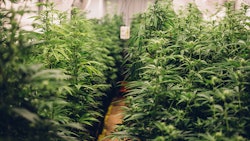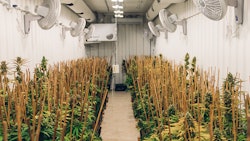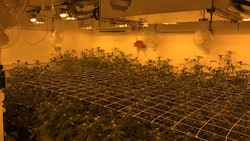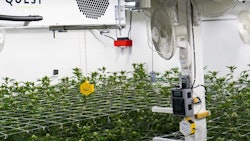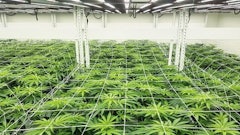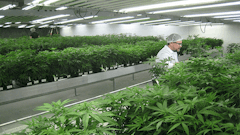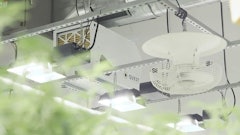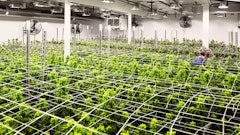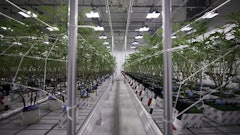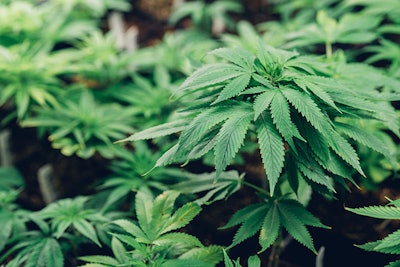
Within a cubic foot (12’ x 12” x 12”) of air, there can be as many as 5,000 spores in a fairly clean room. In a room that’s not so clean, the spore count can jump to 50,000, says Clif Tomasini of Quest Dehumidifiers. “There are so many different spores in the air,” he says. “They’re just waiting for the right things to activate them.”
“They’re always there … we just have to make sure that they aren’t being activated because mold is very dangerous,” he adds.
How Mold Is Activated
In order for mold to propagate, it needs three things. “Mold needs the right temperature, and unfortunately, it does very well in 70 to 80 degrees, because it’s a living thing,” Tomasini says. “You also have to have a food source, and your plants can be a food source.”
Humidity is the third key variable. As long as the humidity isn’t too high, a mold spore will never activate. “Of all the things you can control, humidity is the easiest,” he adds.
Aside from controlling humidity, the next best preventive action that you can do is filter your air. Going from 50,000 spores to 5,000 spores per cubic foot is a huge improvement.
How You Can Filter Your Air
“The kind of filtration we use is a pleated media,” Tomasini says. “If you think about it like a spider web or fabric stitched together …, The tighter it’s stitched together, the smaller the hole is.”
When suppliers manufacture the media, they create tiny holes, measured in microns, and then as air is pulled through the material, it passes through those tiny holes. “As the air passes through, the media traps particles that are bigger than the holes. … Then, there’s filtration, which zaps it, and kills these particles that are sitting on the media.”
Quest offers an air mover called the H5, which is designed for grow room use. The air mover pulls room air through a filter, which can be discarded and replaced as needed.
When using filtration in your grow room, Tomasini suggests waiting until a crop turn to empty it. “What’s in it is filthy, so you have a high concentration of really nasty things. So you want to leave it in place until the room is empty … because if you were to take it out and move it around, you’re basically releasing a bunch of garbage in the air, which is the opposite of what you’re trying to do,” he says.
“The thing about this type of filtration is that it actually gets better as it traps more spores and other particles. … The dirtier it gets, the holes start getting clogged and start catching smaller things. Unfortunately, because it is getting clogged, less air can penetrate, and we’re processing less. There’s a trade-off.”
Whether capturing smaller particles or larger ones, with filtration, your plants are left with a cleaner, healthier environment that reduces the spread of mold.










